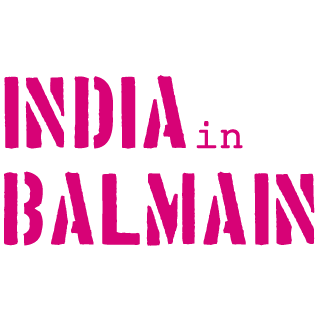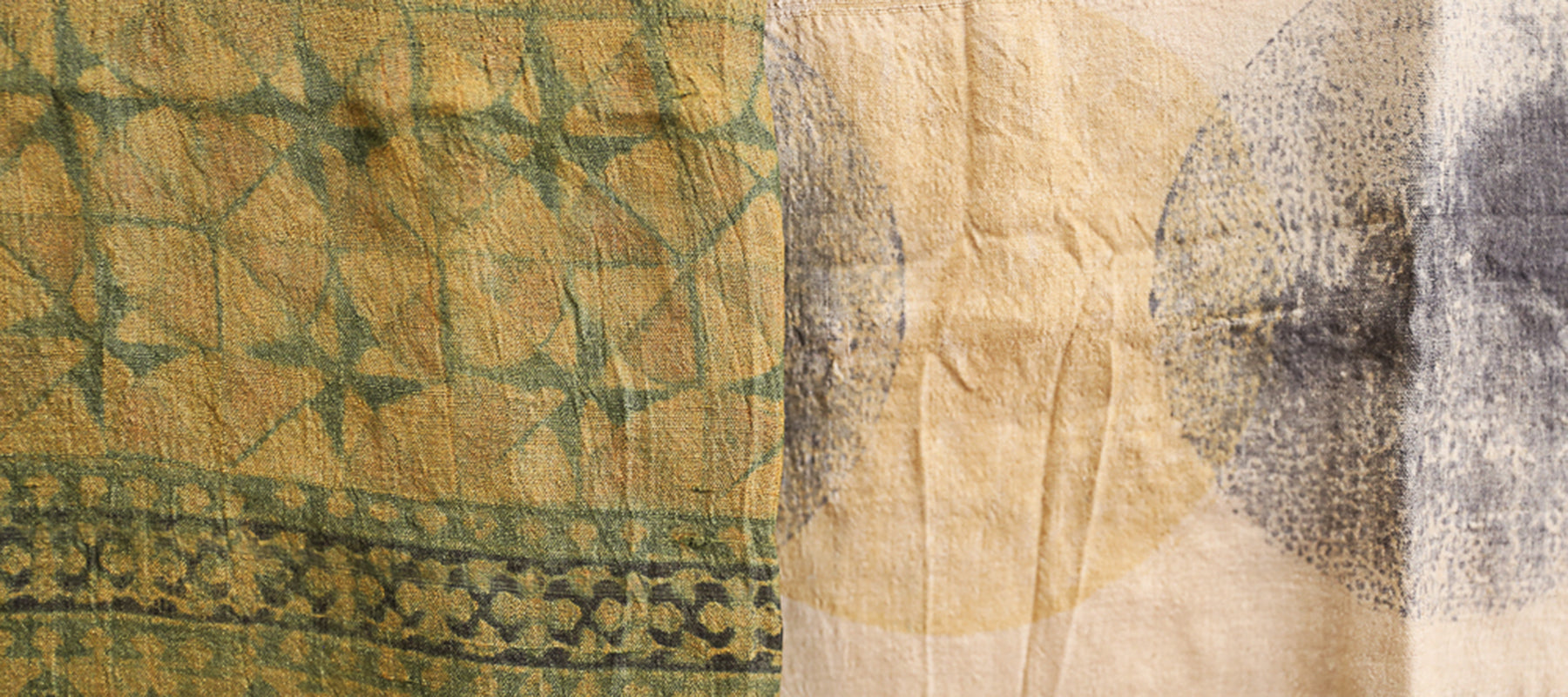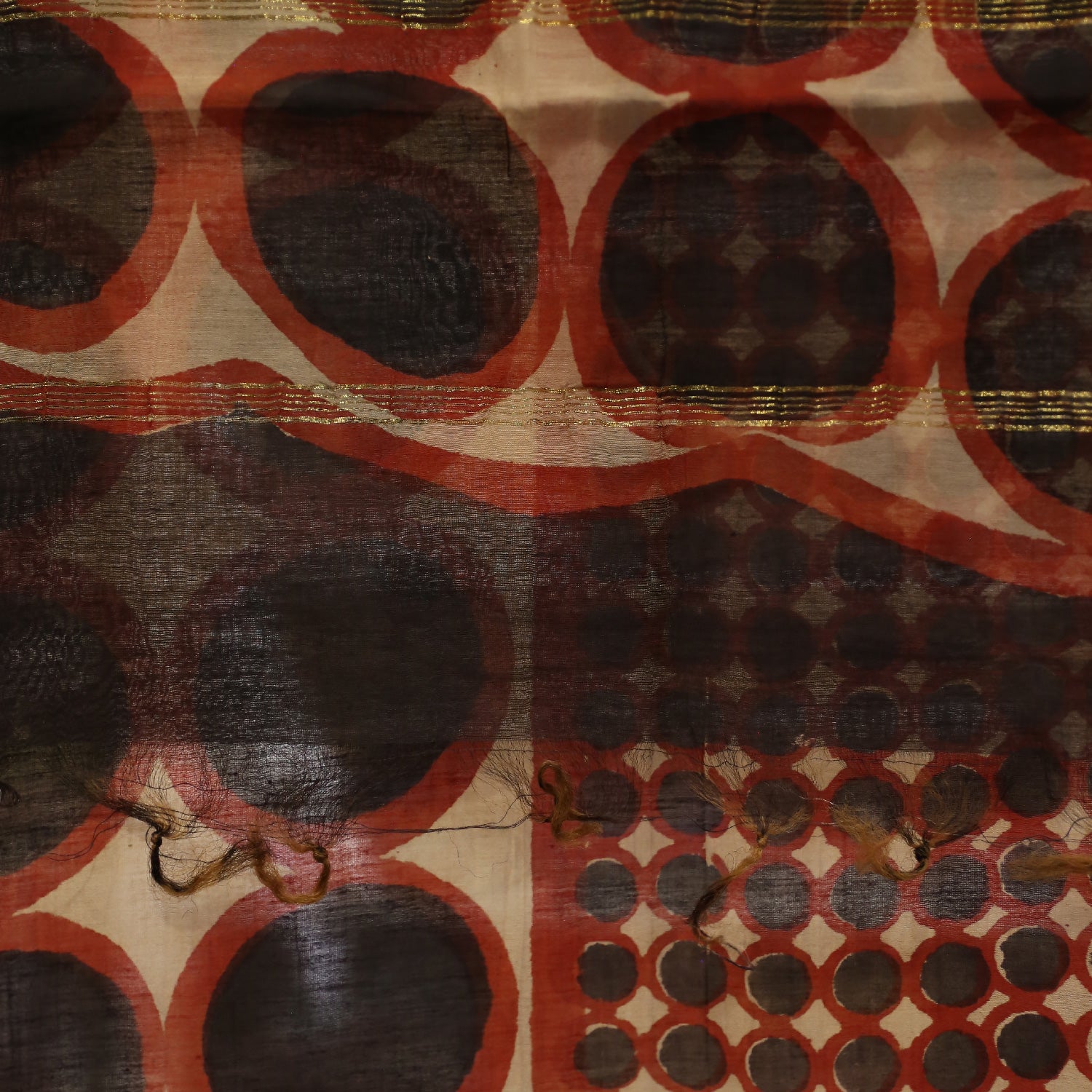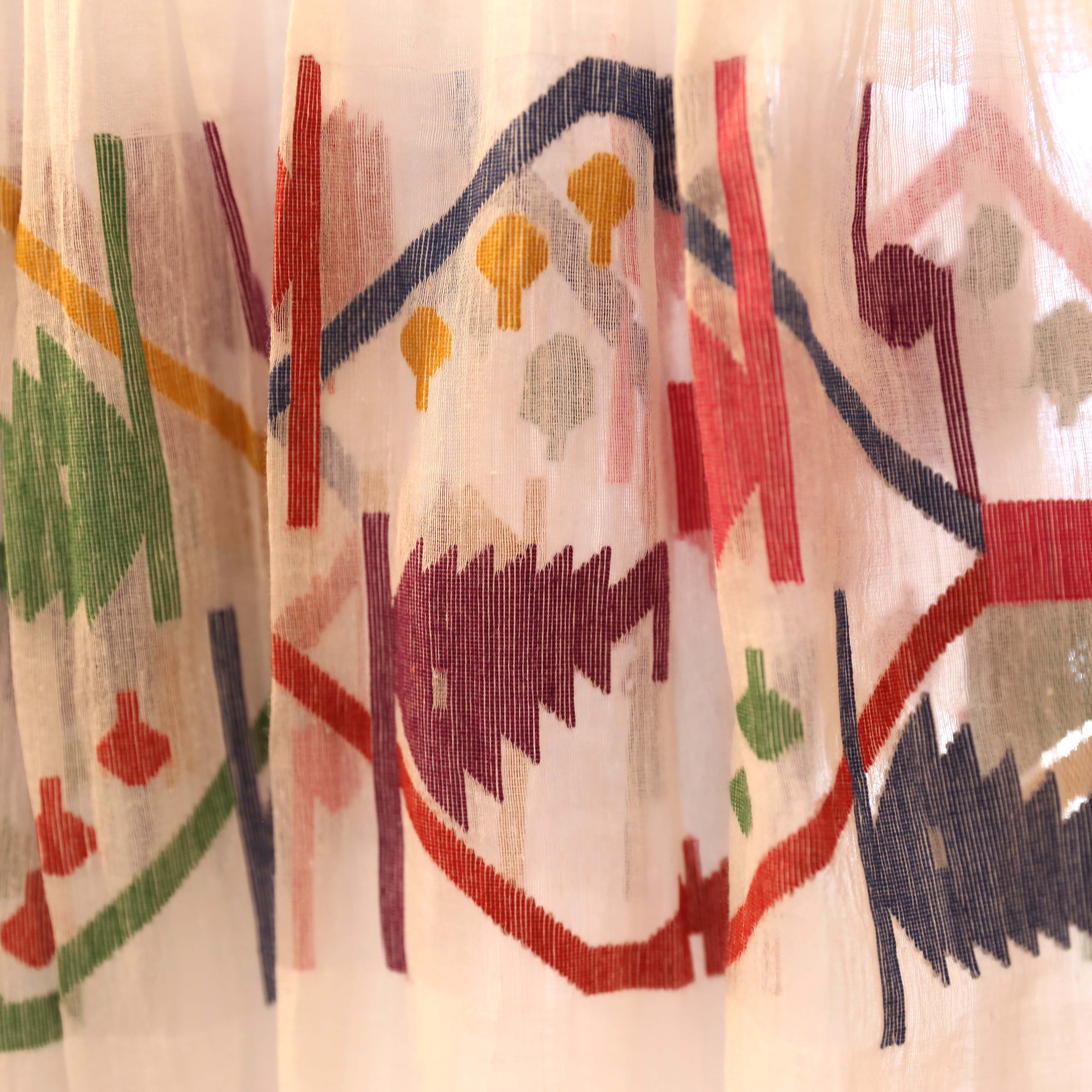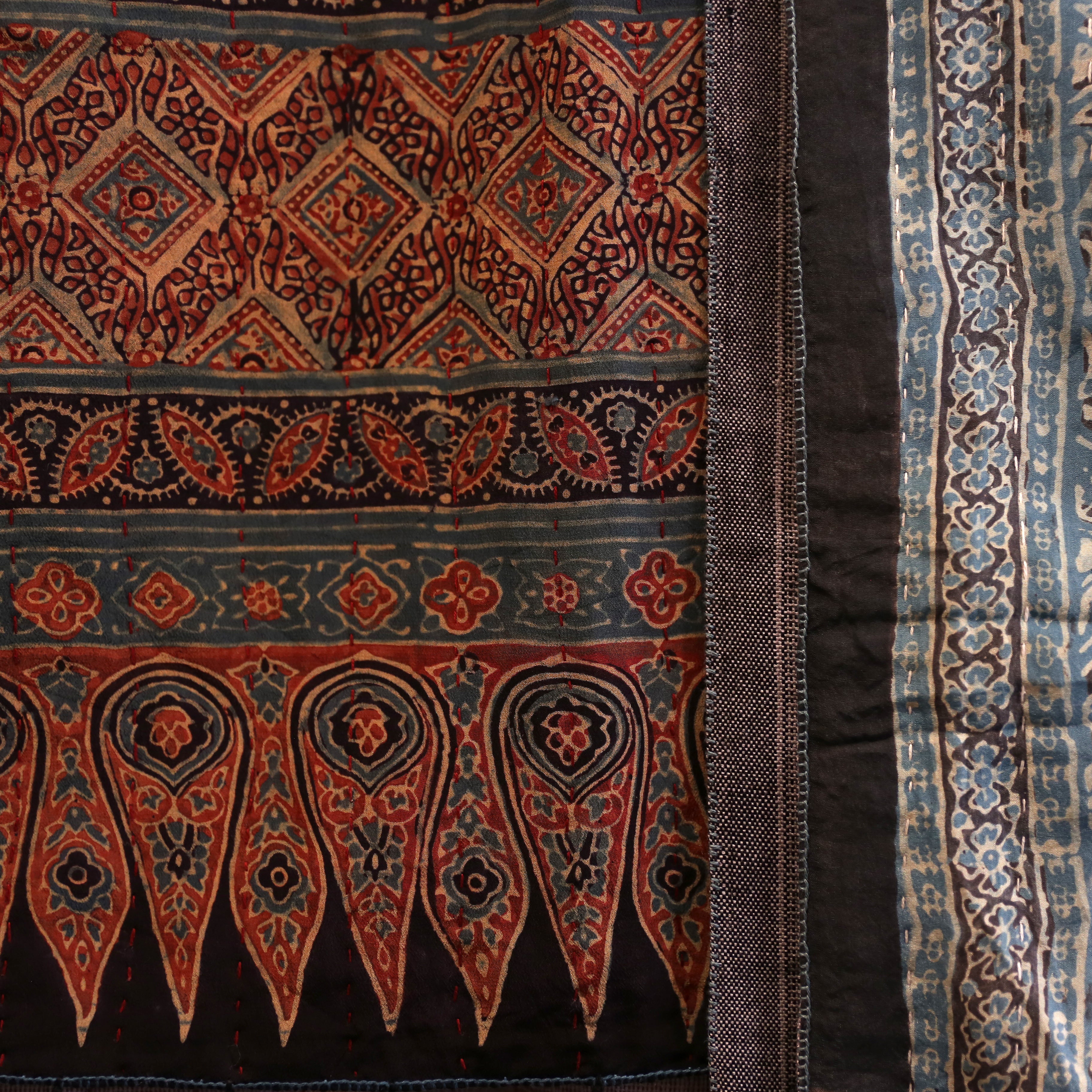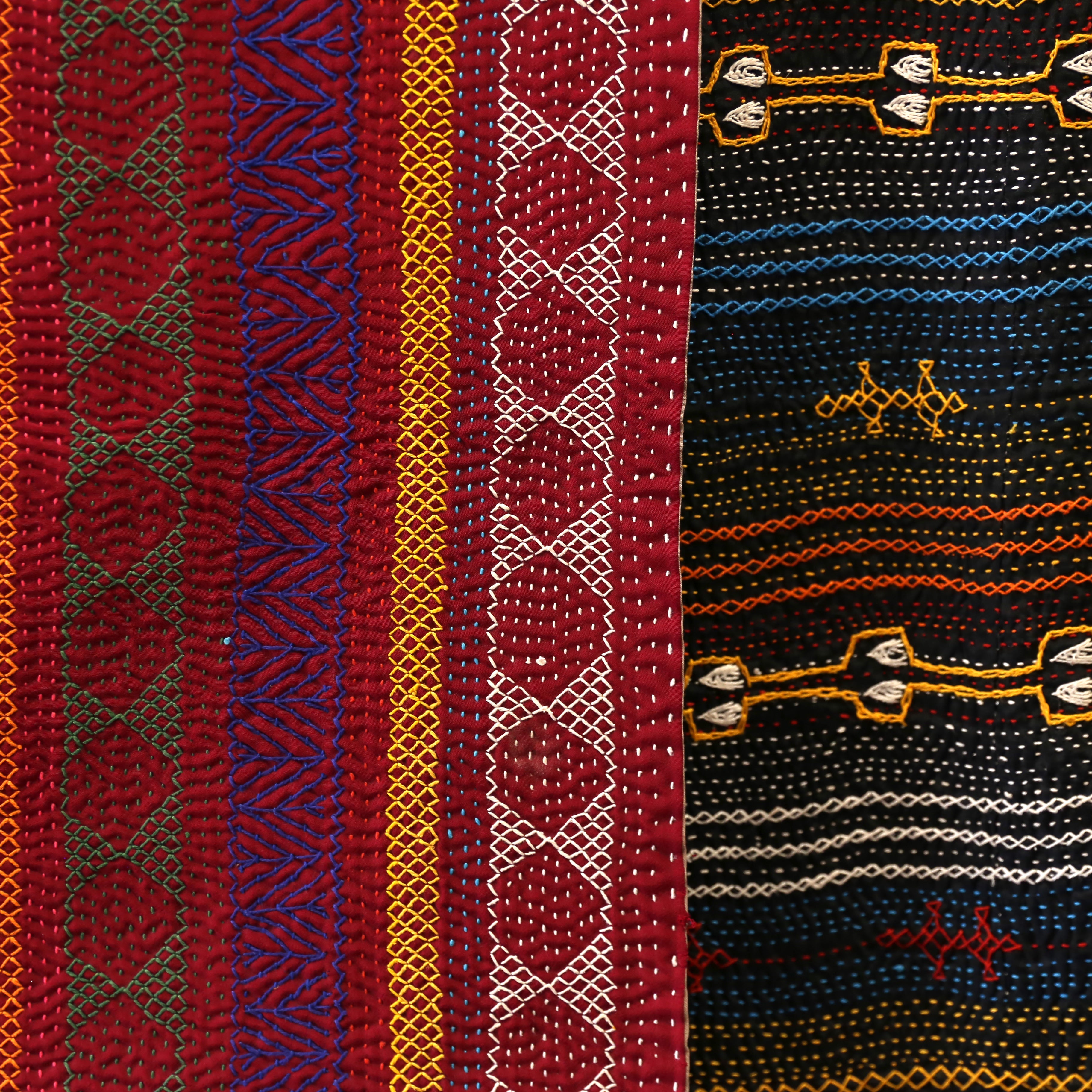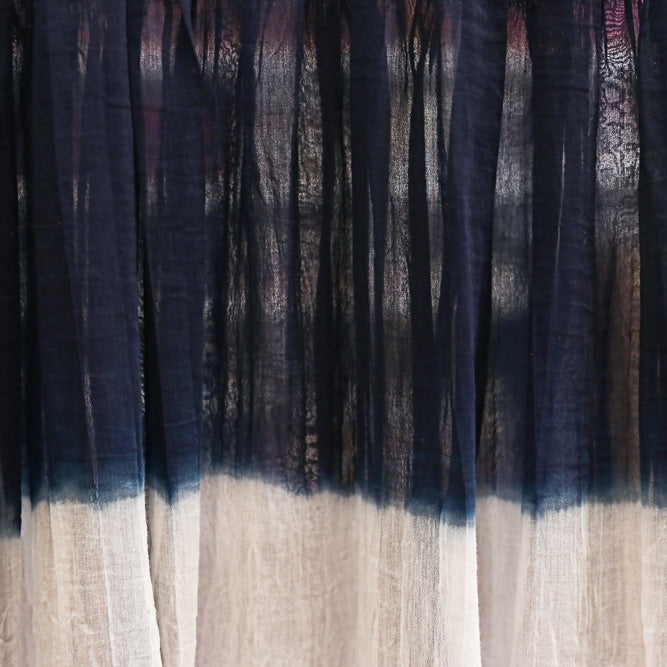Dyed ⋮ Natural Dyes
For hundreds of years rangrez (dyers) have relied upon natural dyes to colour cloth. Indian dyers were renowned for their almost mythical ability to nurture and extract magnificent shades from their environment, and their talent far surpasses their contemporaries. Of course, India was blessed with a myriad of flowering trees, flowers, and shrubs that translated into an array of hues when distilled for dying. Each region specialised in certain shades dependent upon surrounding vegetation. (Anokhi Handblockopedia 2014)
Since time immemorial, natural dyeing has been more than an art. For many, it has been a source of livelihood with craft traditions passed on from one generation to another.
The climate in India makes the process easier and favourable for the artisans, as does the availability of raw materials such as indigo, madder, pomegranate and marigold flowers. The tone of the dye produced depends on the quantity of water, base material mordant and dye concentrations. With time, the colour fades, but that is a part of the natural process
SYAHI - NATURAL BLACK
Syahi is a black printing paste made from rusty horseshoes, nails or other scrap iron ferrous sulphate. Fermented with molasses and water for approximately fifteen days, this concoction produces a rich brown liquor that is briefly boiled with tamarind powder.
Before printing, the rangrez (dyer), treats the cloth with harda, a powdered yellow fruit from the myrobalan tree - Terminalia chebula. This natural source of tannic acid allows subsequent dyes to adhere to the fibres with even absorption. During printing the brown liquor quickly turns into a rich black. The fabric is dried in the sun for one or two days enabling the dye to penetrate the fabric, and then submerged in a near-boiling bath of alizarin dye, for approximately an hour, to fix the black. (Anokhi Handblockopedia 2014)
INDIGO
Natural indigo powder is an extract prepared from Indigofera tinctoria. Indigo is the legendary source of colourfast blues and its ability to produce a wide range of shades has made it the most successful dye plant ever known. Indigo can give clear blues that range from the tint of a pale sky to a deep navy that is almost black.
MADDER
Madder – Rubia tinctorium and Rubia cordifolia. Madder is one of the oldest dyestuffs known. It is most frequently used to produce turkey reds, mulberry, orange-red, terracotta, and in combination with other dyes and dyeing procedures can yield crimson, purple, rust, browns, and near black. The primary dye components are alizarin and munjistin which are found in the roots.
In 1869 chemists developed a synthetic version of natural alizarin. A small yet growing number of dye specialists still use natural madder, but the vast majority work with synthesised alizarin which is easier to use and less expensive to buy. Other ingredients and processes remain natural.
POMEGRANITE
Pomegranate - An extract from the rinds of pomegranates, Punica granatum, this dyestuff is high in tannin and improves the light and washfastnes of any dye with which it is mixed. In India and Southeast Asia it is used as both a dye and a mordant. Pomegranate yields soft yellows to green-yellows
MARIGOLD
Marigold - This dyestuff consists of dried and ground flower heads of the Tagetes species. It yields rich vibrant yellows, green-yellows and oranges with 20 -30% dried marigold to weight of fibre. Marigold is cultivated all over the world for its decorative flowers, for religious festivals and for its colourant. Marigold has a moderate light and washfastness.
ENVIRONMENTAL ISSUES
Historically hand block printing had minimal impact on the environment. The chhippa (block printer) community worked in small groups and relied upon natural dyes washed in mineral rich waters to achieve the desired effects; however the advent of chemical dyes rapidly changed that scenario.
Now, environmental issues are starting to be addressed. Most significantly chemical dyestuffs now face global regulation and goods must meet increasingly stringent standards. Pollution issues remain but a concerned public is increasingly demanding eco-friendly products.
